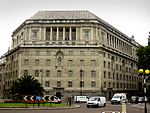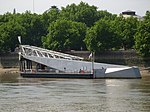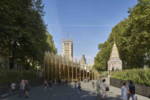Thames House
1928 establishments in EnglandBuildings and structures on the River ThamesFrank Baines buildingsGovernment buildings completed in 1994Grade II listed buildings in the City of Westminster ... and 11 more
Grade II listed office buildingsHeadquarters in the United KingdomImperial Chemical IndustriesIntelligence agency headquartersMI5MillbankNational government buildings in LondonNeoclassical architecture in LondonOffice buildings completed in 1928Office buildings in LondonUse British English from August 2015

Thames House is an office building in Millbank, London, on the north bank of the River Thames adjacent to Lambeth Bridge. Originally used as offices by Imperial Chemical Industries (ICI), it has served as the headquarters of the United Kingdom's internal Security Service (commonly known as MI5) since December 1994. It also served as the London headquarters of the Northern Ireland Office (NIO) until March 2013.
Excerpt from the Wikipedia article Thames House (License: CC BY-SA 3.0, Authors, Images).Thames House
Millbank, London Millbank
Geographical coordinates (GPS) Address External links Nearby Places Show on map
Geographical coordinates (GPS)
| Latitude | Longitude |
|---|---|
| N 51.493888888889 ° | E -0.12555555555556 ° |
Address
The Security Service (MI5)
Millbank
SW1P 4PN London, Millbank
England, United Kingdom
Open on Google Maps










